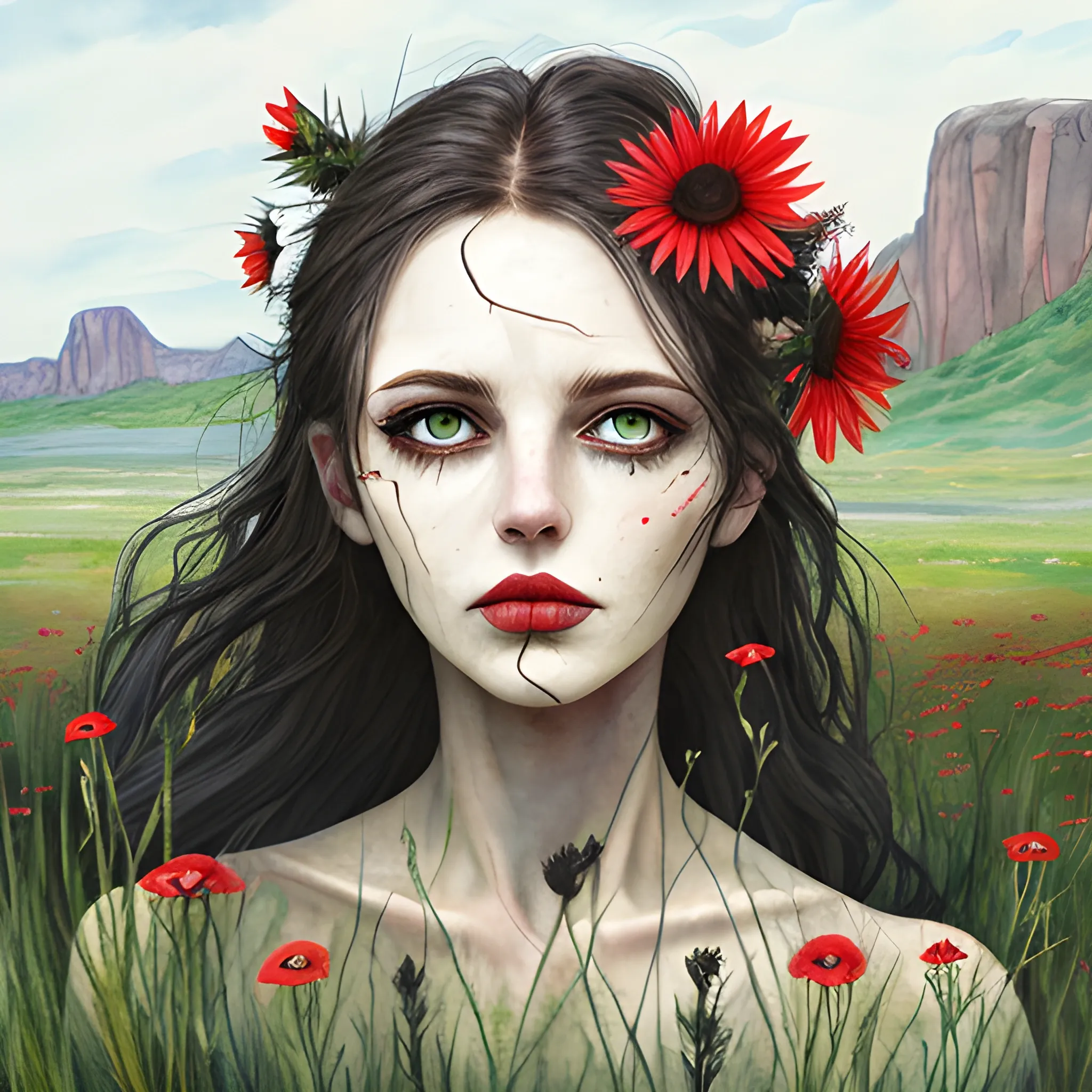Search Results for grasslands
Explore AI generated designs, images, art and prompts by top community artists and designers.
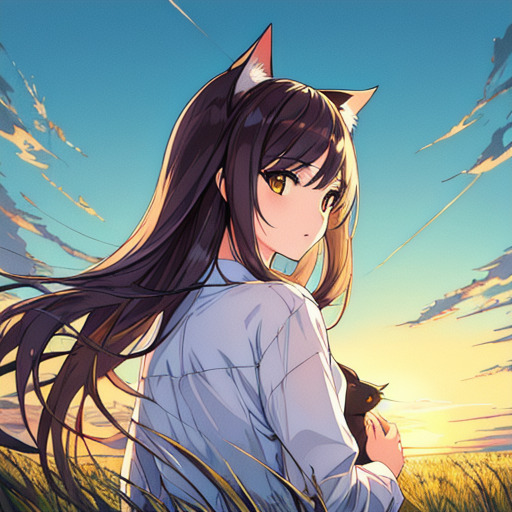
masterpiece , best quality , ultra-detailed , illustration , straight on , a girl , portrait , grasslands , looking back , cat ,
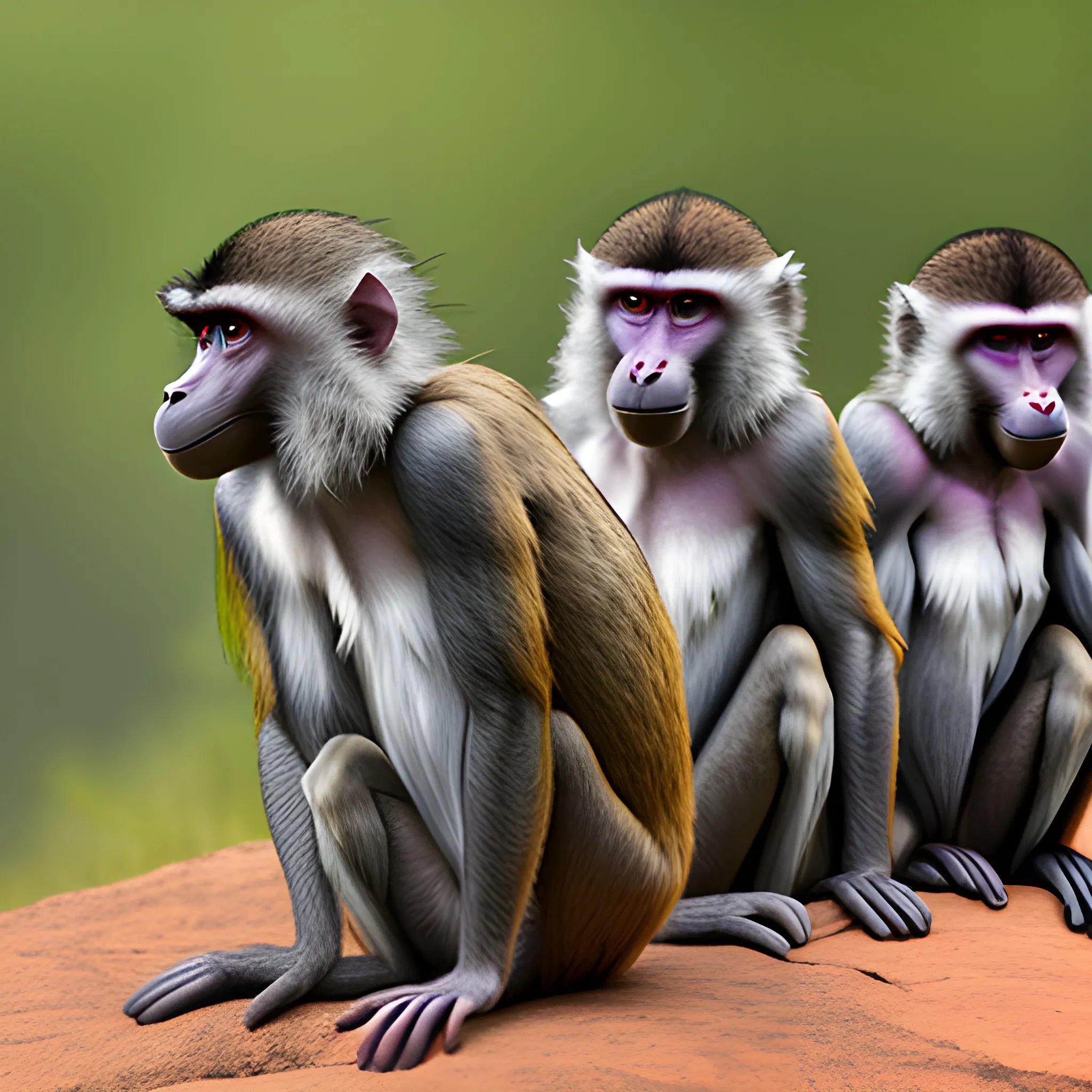
Appearance: The Baboon is a medium-sized primate with a distinctive and charismatic appearance. It has a robust and muscular body , covered in short fur that can range in color from brown to gray or even olive-green. Baboons have a dog-like snout , sharp teeth , and a hairless face with prominent cheek pouches , which they use to store food. They have long arms and powerful legs , allowing them to move quickly and with agility. Features: Baboons are highly social creatures , living in close-knit troops that can consist of a few individuals to larger groups. Their intelligence and adaptability enable them to survive in various environments , from lush jungles to arid savannahs. They are known for their strong social hierarchy and complex communication , using vocalizations , gestures , and facial expressions to convey emotions and intentions. Habitat: Baboons are versatile animals that can thrive in a range of habitats , including forests , grasslands , and mountainous regions. They are often found near water sources , as they require regular access to drinking water. In your DND world , baboons might inhabit areas with lush vegetation or live in proximity to humanoid settlements , scavenging for food scraps. Behavior: Baboons are opportunistic omnivores , with a varied diet that includes fruits , leaves , seeds , insects , and small animals. They are skilled climbers and can use their agility to escape predators or reach high-up food sources. Baboons are known for their playfulness , engaging in social interactions , grooming , and even games with each other. Role in the World: In your DND world , baboons could serve as a part of the natural ecosystem or be associated with certain deities or nature spirits. Druids and rangers might have a special connection with baboons , viewing them as symbols of adaptability and community. Encountering baboons in the wild could present various opportunities for adventurers. They might have non-combat interactions with the primates , such as observing their social behaviors or using animal handling skills to communicate with them. Baboons could also play a role in quests involving local tribes or settlements , where their presence might be considered either beneficial or problematic depending on the circumstances. While not inherently aggressive , baboons can defend themselves and their troop if they feel threatened , making it essential for adventurers to approach them with respect and caution. ,
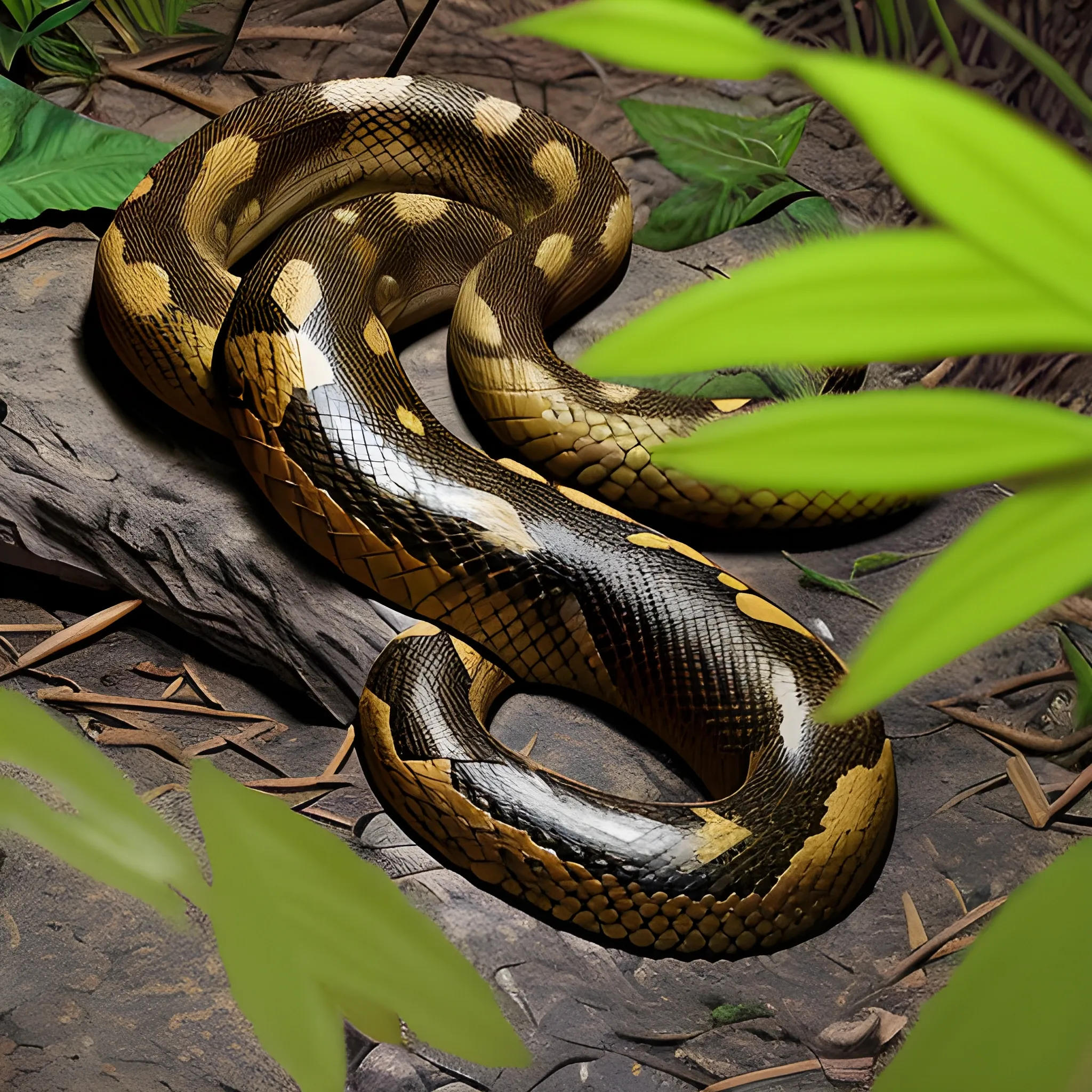
Appearance: The Poisonous Snake is a small to medium-sized reptile with a slender body and a distinctive pattern of scales. Its colors can vary widely , from vibrant and striking patterns to more muted earth tones , helping it blend into its natural surroundings. The snake's head is triangular , and it has a pair of fangs at the front of its mouth , through which it delivers its venom. Features: The Poisonous Snake is known for its venomous bite , which it uses to incapacitate its prey and defend itself from threats. Its venom can vary in potency , from causing mild discomfort to being deadly , depending on the species. While not as powerful as the venom of more dangerous creatures , the Poisonous Snake's bite can still cause considerable harm to unwary adventurers. Habitat: Poisonous Snakes can be found in a wide range of environments , from dense jungles and forests to dry deserts and grasslands. They are highly adaptable creatures and can thrive in various conditions , making them a common sight in untamed wilderness areas. Behavior: The Poisonous Snake is a stealthy predator , relying on its camouflage and patience to ambush its prey. It strikes quickly and accurately , using its venom to immobilize and begin the process of consuming its victim. Poisonous Snakes are generally non-aggressive towards larger creatures , preferring to flee rather than confront a potential threat. Role in the World: In your DND world , Poisonous Snakes could serve as common dangers in the wild , particularly in regions where adventurers explore untamed territories. Druids and rangers might have a connection with these creatures , viewing them as part of the natural balance. Encountering a Poisonous Snake in the wild can be a common and potentially hazardous event for adventurers. While they are generally not aggressive , they may strike if they feel threatened or cornered. Players might need to exercise caution and use skills such as animal handling or survival to avoid confrontations with these venomous reptiles. If adventurers do find themselves bitten , they must act quickly to counteract the effects of the venom and avoid more serious consequences. The presence of Poisonous Snakes in your campaign adds an element of realism and danger to the wilderness. Players will need to be vigilant and watchful during their travels , as the risk of encountering these venomous creatures is ever-present. Poisonous Snakes can also serve as a minor but meaningful challenge , especially for lower-level adventurers , teaching them the importance of preparation and awareness in the untamed wilderness. ,
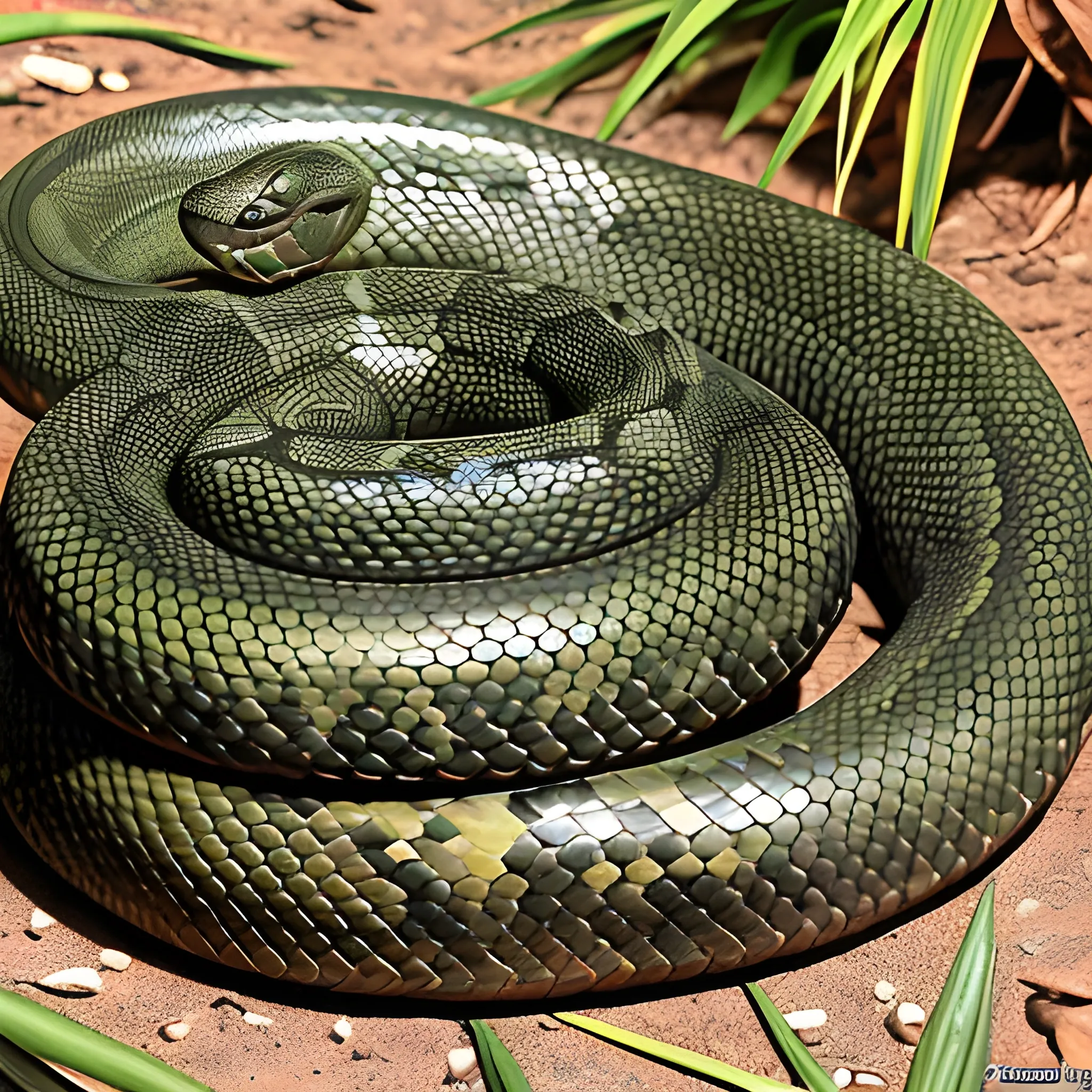
Appearance: The Constrictor Snake is a long and powerful reptile , known for its impressive ability to squeeze and suffocate its prey. It typically has a slender and muscular body , covered in scales that can vary in color from dull brown and green to vibrant patterns. Constrictor snakes have sharp , recurved teeth designed to grip and hold their prey as they constrict it. They are typically non-venomous and rely on their powerful constriction to subdue their victims. Features: The Constrictor Snake is a stealthy predator , relying on its keen senses to locate prey and ambush it. Its long , forked tongue allows it to taste the air and track potential food sources. Once it catches its prey , the snake coils around it , using its powerful muscles to squeeze and immobilize it. This method of hunting allows the snake to subdue prey larger than its mouth , as it doesn't need to swallow the victim whole. Habitat: Constrictor Snakes are found in a wide range of environments , from dense jungles and swamps to arid deserts and grasslands. They prefer warm climates and can be active both during the day and at night. In your DND world , they might inhabit untamed wilderness areas or hidden lairs , waiting for prey to pass by. Behavior: Constrictor snakes are generally solitary creatures , except during mating season. They are non-aggressive toward larger creatures , preferring to avoid confrontation when possible. When hunting , they rely on stealth and patience to surprise their prey. Their constriction technique is highly effective , allowing them to overpower and devour a variety of creatures. Role in the World: In your DND world , Constrictor Snakes could be a common predator in certain regions , often preying on small to medium-sized creatures. Druids and rangers might have a connection with these snakes , viewing them as symbols of balance in the natural world. Encountering a Constrictor Snake in the wild could be a challenging and potentially dangerous situation for adventurers. While they are not typically aggressive toward larger creatures , they may perceive humanoids as potential threats if they feel cornered or provoked. Players might need to exercise caution and use appropriate skills , such as animal handling or survival , to safely navigate through areas where these snakes are known to dwell. If adventurers find themselves facing a Constrictor Snake , they must be prepared for a battle of strength and wits , as the snake's constricting abilities can be deadly if not dealt with carefully. ,
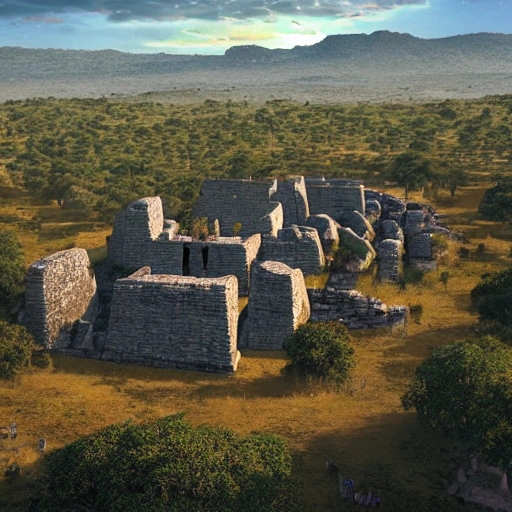
Eye level view of Great Zimbabwe at dusk on a sunny day , showcasing the grand stone structures and towering walls of the ancient city , surrounded by rolling hills and savanna grasslands. People in traditional clothing can be seen going about their daily activities , masterpiece , Ultra Detailed , Hyper-realistic , environment concept art by Unreal Engine. ,
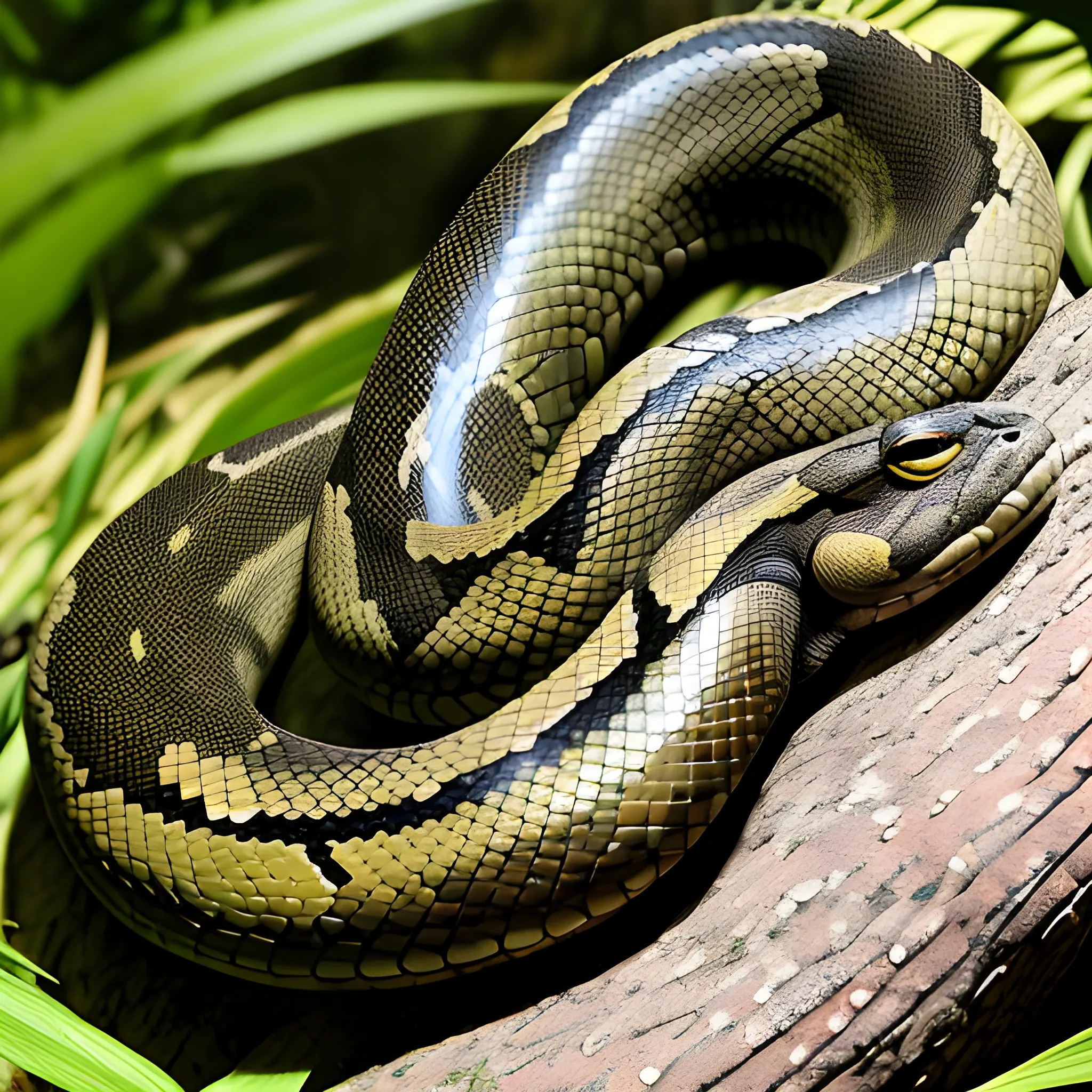
Appearance: The Constrictor Snake is a long and powerful reptile , known for its impressive ability to squeeze and suffocate its prey. It typically has a slender and muscular body , covered in scales that can vary in color from dull brown and green to vibrant patterns. Constrictor snakes have sharp , recurved teeth designed to grip and hold their prey as they constrict it. They are typically non-venomous and rely on their powerful constriction to subdue their victims. Features: The Constrictor Snake is a stealthy predator , relying on its keen senses to locate prey and ambush it. Its long , forked tongue allows it to taste the air and track potential food sources. Once it catches its prey , the snake coils around it , using its powerful muscles to squeeze and immobilize it. This method of hunting allows the snake to subdue prey larger than its mouth , as it doesn't need to swallow the victim whole. Habitat: Constrictor Snakes are found in a wide range of environments , from dense jungles and swamps to arid deserts and grasslands. They prefer warm climates and can be active both during the day and at night. In your DND world , they might inhabit untamed wilderness areas or hidden lairs , waiting for prey to pass by. Behavior: Constrictor snakes are generally solitary creatures , except during mating season. They are non-aggressive toward larger creatures , preferring to avoid confrontation when possible. When hunting , they rely on stealth and patience to surprise their prey. Their constriction technique is highly effective , allowing them to overpower and devour a variety of creatures. Role in the World: In your DND world , Constrictor Snakes could be a common predator in certain regions , often preying on small to medium-sized creatures. Druids and rangers might have a connection with these snakes , viewing them as symbols of balance in the natural world. Encountering a Constrictor Snake in the wild could be a challenging and potentially dangerous situation for adventurers. While they are not typically aggressive toward larger creatures , they may perceive humanoids as potential threats if they feel cornered or provoked. Players might need to exercise caution and use appropriate skills , such as animal handling or survival , to safely navigate through areas where these snakes are known to dwell. If adventurers find themselves facing a Constrictor Snake , they must be prepared for a battle of strength and wits , as the snake's constricting abilities can be deadly if not dealt with carefully. ,
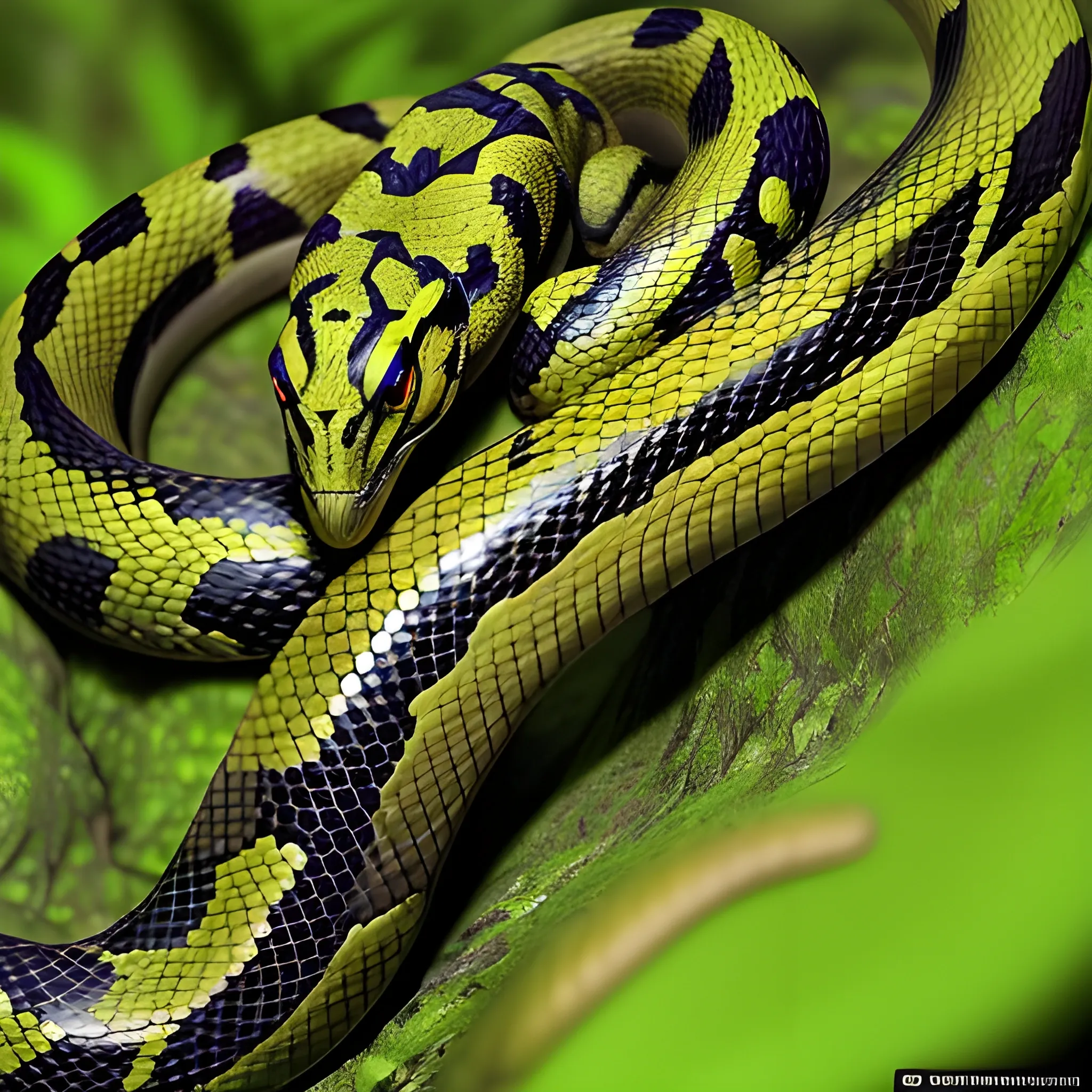
Appearance: The Poisonous Snake is a small to medium-sized reptile with a slender body and a distinctive pattern of scales. Its colors can vary widely , from vibrant and striking patterns to more muted earth tones , helping it blend into its natural surroundings. The snake's head is triangular , and it has a pair of fangs at the front of its mouth , through which it delivers its venom. Features: The Poisonous Snake is known for its venomous bite , which it uses to incapacitate its prey and defend itself from threats. Its venom can vary in potency , from causing mild discomfort to being deadly , depending on the species. While not as powerful as the venom of more dangerous creatures , the Poisonous Snake's bite can still cause considerable harm to unwary adventurers. Habitat: Poisonous Snakes can be found in a wide range of environments , from dense jungles and forests to dry deserts and grasslands. They are highly adaptable creatures and can thrive in various conditions , making them a common sight in untamed wilderness areas. Behavior: The Poisonous Snake is a stealthy predator , relying on its camouflage and patience to ambush its prey. It strikes quickly and accurately , using its venom to immobilize and begin the process of consuming its victim. Poisonous Snakes are generally non-aggressive towards larger creatures , preferring to flee rather than confront a potential threat. Role in the World: In your DND world , Poisonous Snakes could serve as common dangers in the wild , particularly in regions where adventurers explore untamed territories. Druids and rangers might have a connection with these creatures , viewing them as part of the natural balance. Encountering a Poisonous Snake in the wild can be a common and potentially hazardous event for adventurers. While they are generally not aggressive , they may strike if they feel threatened or cornered. Players might need to exercise caution and use skills such as animal handling or survival to avoid confrontations with these venomous reptiles. If adventurers do find themselves bitten , they must act quickly to counteract the effects of the venom and avoid more serious consequences. The presence of Poisonous Snakes in your campaign adds an element of realism and danger to the wilderness. Players will need to be vigilant and watchful during their travels , as the risk of encountering these venomous creatures is ever-present. Poisonous Snakes can also serve as a minor but meaningful challenge , especially for lower-level adventurers , teaching them the importance of preparation and awareness in the untamed wilderness. ,

Appearance: The Constrictor Snake is a long and powerful reptile , known for its impressive ability to squeeze and suffocate its prey. It typically has a slender and muscular body , covered in scales that can vary in color from dull brown and green to vibrant patterns. Constrictor snakes have sharp , recurved teeth designed to grip and hold their prey as they constrict it. They are typically non-venomous and rely on their powerful constriction to subdue their victims. Features: The Constrictor Snake is a stealthy predator , relying on its keen senses to locate prey and ambush it. Its long , forked tongue allows it to taste the air and track potential food sources. Once it catches its prey , the snake coils around it , using its powerful muscles to squeeze and immobilize it. This method of hunting allows the snake to subdue prey larger than its mouth , as it doesn't need to swallow the victim whole. Habitat: Constrictor Snakes are found in a wide range of environments , from dense jungles and swamps to arid deserts and grasslands. They prefer warm climates and can be active both during the day and at night. In your DND world , they might inhabit untamed wilderness areas or hidden lairs , waiting for prey to pass by. Behavior: Constrictor snakes are generally solitary creatures , except during mating season. They are non-aggressive toward larger creatures , preferring to avoid confrontation when possible. When hunting , they rely on stealth and patience to surprise their prey. Their constriction technique is highly effective , allowing them to overpower and devour a variety of creatures. Role in the World: In your DND world , Constrictor Snakes could be a common predator in certain regions , often preying on small to medium-sized creatures. Druids and rangers might have a connection with these snakes , viewing them as symbols of balance in the natural world. Encountering a Constrictor Snake in the wild could be a challenging and potentially dangerous situation for adventurers. While they are not typically aggressive toward larger creatures , they may perceive humanoids as potential threats if they feel cornered or provoked. Players might need to exercise caution and use appropriate skills , such as animal handling or survival , to safely navigate through areas where these snakes are known to dwell. If adventurers find themselves facing a Constrictor Snake , they must be prepared for a battle of strength and wits , as the snake's constricting abilities can be deadly if not dealt with carefully. ,
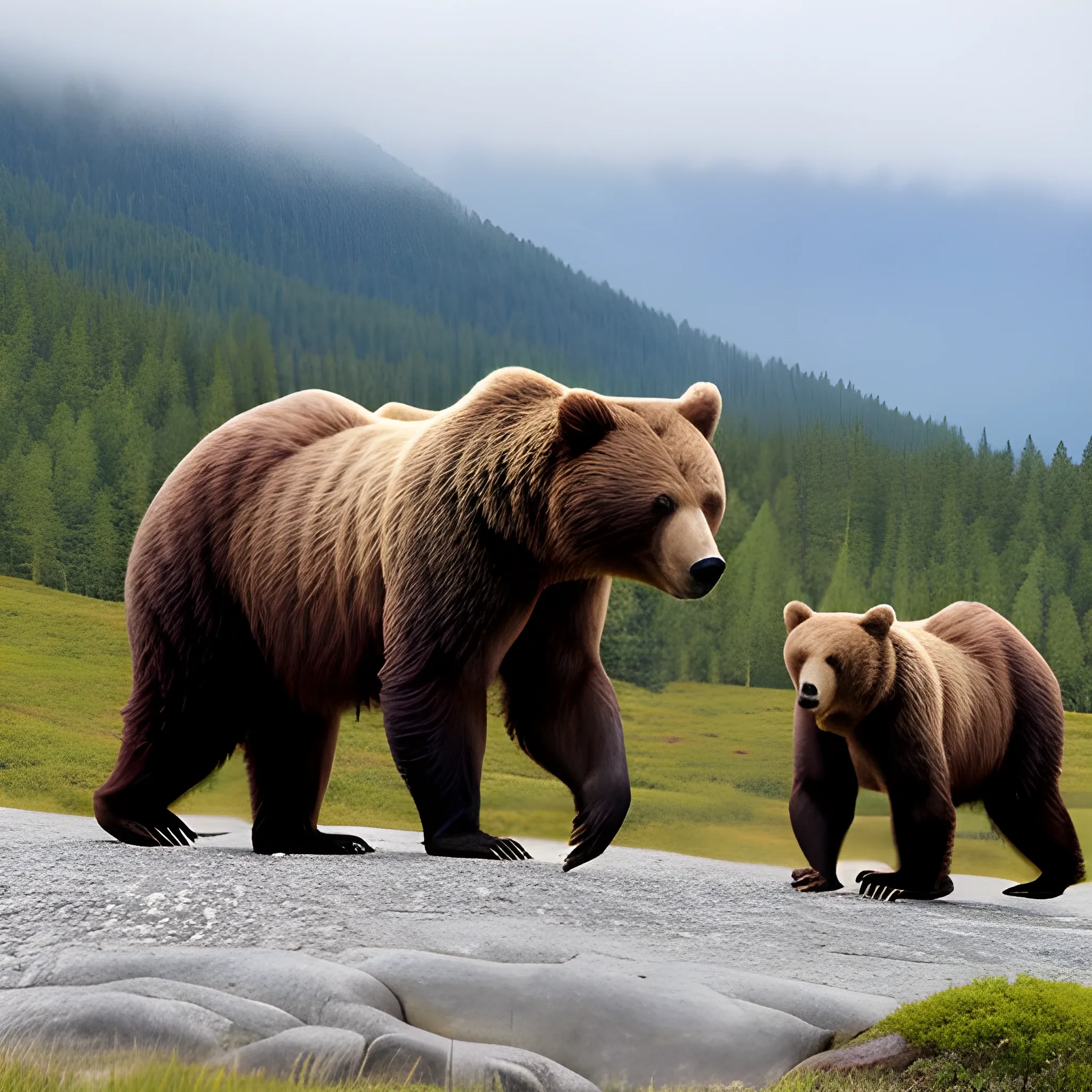
Appearance: The brown bear is a large and powerful creature , often considered the embodiment of strength and ferocity. It has a distinctive hump of muscle on its shoulders , which sets it apart from other bear species. Despite its name , the brown bear's fur can vary significantly in color , ranging from light brown to dark brown , and even shades of blonde or reddish-brown. Some individuals may have a lighter-colored face , creating a "grizzled" appearance , while others have a more uniform coloration throughout their body. Features: Brown bears are well-adapted for survival in various environments. They have strong limbs with sharp claws , which they use for digging , climbing , and catching prey. Their jaws are equipped with formidable teeth that can crush bones and tear through flesh. Adult brown bears can stand around 6 to 10 feet tall when on their hind legs , and their weight ranges from 400 to 1 , 500 pounds , with males being significantly larger than females. Habitat: Brown bears are versatile creatures , capable of inhabiting a wide range of habitats. They can be found in dense forests , grasslands , tundra , and mountainous regions. In your DND world , they might be common inhabitants of rugged wilderness areas , guarding their territories and foraging for food. Behavior: Brown bears are generally solitary animals , except during the breeding season or when a mother is caring for her cubs. They are omnivorous , having a diverse diet that includes berries , fruits , fish , insects , small mammals , and even carrion. Their intelligence and resourcefulness enable them to adapt to different food sources based on the season and availability. Role in the World: In your DND world , brown bears could play a significant role in the ecosystem. They might be seen as the apex predators of certain regions , balancing the population of prey animals and ensuring the health of the natural environment. Druids and rangers could have a special connection with brown bears , viewing them as symbols of the wild and protectors of nature. Encountering a brown bear in the wilderness could be a thrilling and potentially dangerous experience for adventurers. These formidable creatures are generally not aggressive toward humans , but they may become defensive if they feel threatened or if their territory is encroached upon. Adventurers might have opportunities to peacefully observe brown bears from a distance or use animal handling skills to avoid conflict. However , provoking or attacking a brown bear could lead to a fierce and challenging battle , as they are capable of inflicting significant damage with their powerful claws and jaws. ,
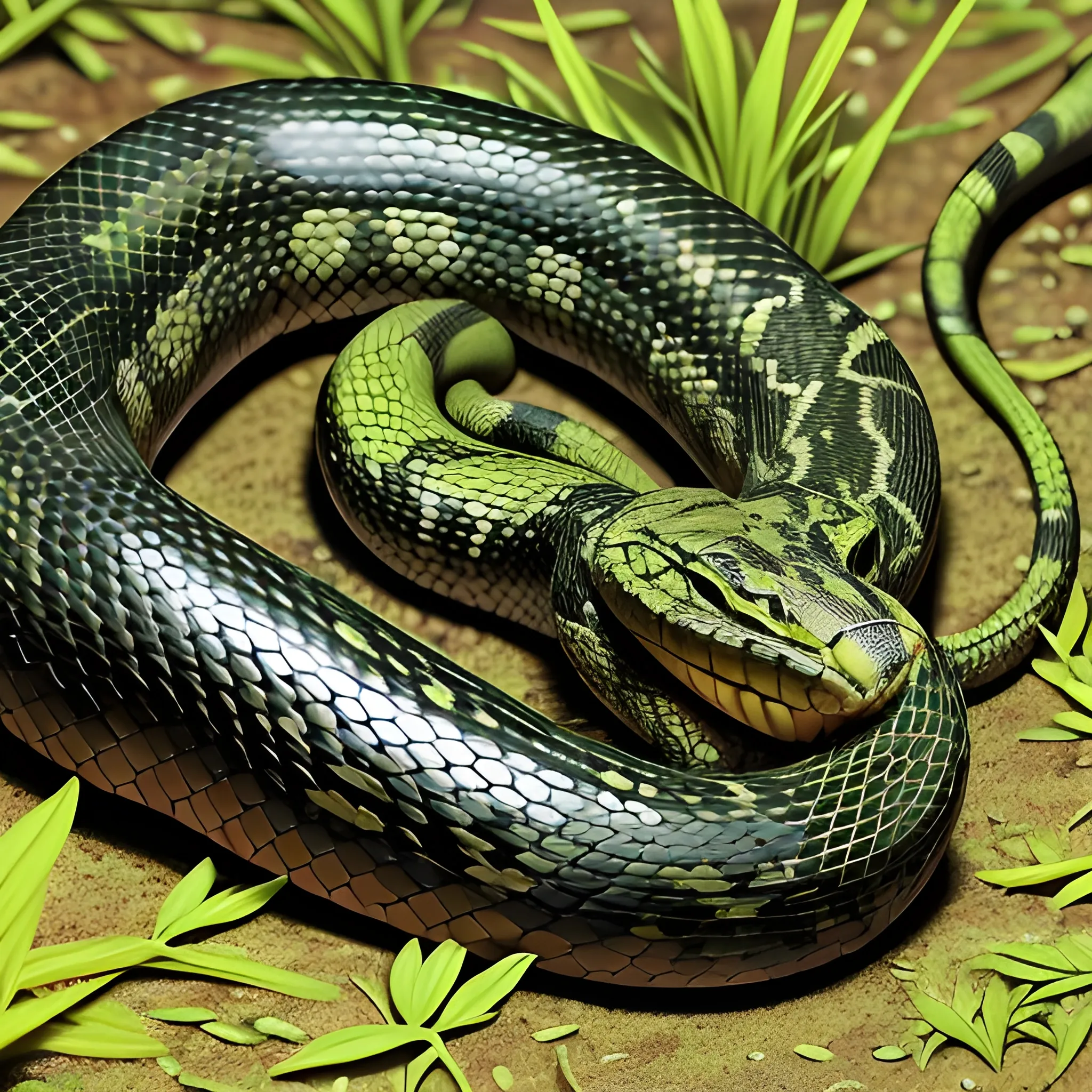
Appearance: The Poisonous Snake is a small to medium-sized reptile with a slender body and a distinctive pattern of scales. Its colors can vary widely , from vibrant and striking patterns to more muted earth tones , helping it blend into its natural surroundings. The snake's head is triangular , and it has a pair of fangs at the front of its mouth , through which it delivers its venom. Features: The Poisonous Snake is known for its venomous bite , which it uses to incapacitate its prey and defend itself from threats. Its venom can vary in potency , from causing mild discomfort to being deadly , depending on the species. While not as powerful as the venom of more dangerous creatures , the Poisonous Snake's bite can still cause considerable harm to unwary adventurers. Habitat: Poisonous Snakes can be found in a wide range of environments , from dense jungles and forests to dry deserts and grasslands. They are highly adaptable creatures and can thrive in various conditions , making them a common sight in untamed wilderness areas. Behavior: The Poisonous Snake is a stealthy predator , relying on its camouflage and patience to ambush its prey. It strikes quickly and accurately , using its venom to immobilize and begin the process of consuming its victim. Poisonous Snakes are generally non-aggressive towards larger creatures , preferring to flee rather than confront a potential threat. Role in the World: In your DND world , Poisonous Snakes could serve as common dangers in the wild , particularly in regions where adventurers explore untamed territories. Druids and rangers might have a connection with these creatures , viewing them as part of the natural balance. Encountering a Poisonous Snake in the wild can be a common and potentially hazardous event for adventurers. While they are generally not aggressive , they may strike if they feel threatened or cornered. Players might need to exercise caution and use skills such as animal handling or survival to avoid confrontations with these venomous reptiles. If adventurers do find themselves bitten , they must act quickly to counteract the effects of the venom and avoid more serious consequences. The presence of Poisonous Snakes in your campaign adds an element of realism and danger to the wilderness. Players will need to be vigilant and watchful during their travels , as the risk of encountering these venomous creatures is ever-present. Poisonous Snakes can also serve as a minor but meaningful challenge , especially for lower-level adventurers , teaching them the importance of preparation and awareness in the untamed wilderness. ,

Light of the sun , Madder sky , Forests and Grasslands , A foggy cityscape seen in the distance,one very beautiful girl,Wearing red clothes , city: 0.33,Immerse yourself in a huge wind current,living in white clouds,Beyond the Clouds,(Double exposure: 1.5),photo shoot:Brandon Wolfermist,Surreal dreams,Ethereal atmosphere , a sunny day,Contour,Global Illumination,RGB Color,Colorful paintings,High Sharpness,8K,Ghibli Color, ,

A kinetic , high-octane rendering of a speeding Formula 1 car as it takes the legendary Turn 1 Copse Corner , its sleek , aerodynamic body a blur of metallic silver and vibrant team colors against the lush , emerald green of the Silverstone Circuit's historic grasslands , with the distant , rustic grandstands and the iconic Wing Bridge blurring into a frenzy of speed and adrenaline. ,
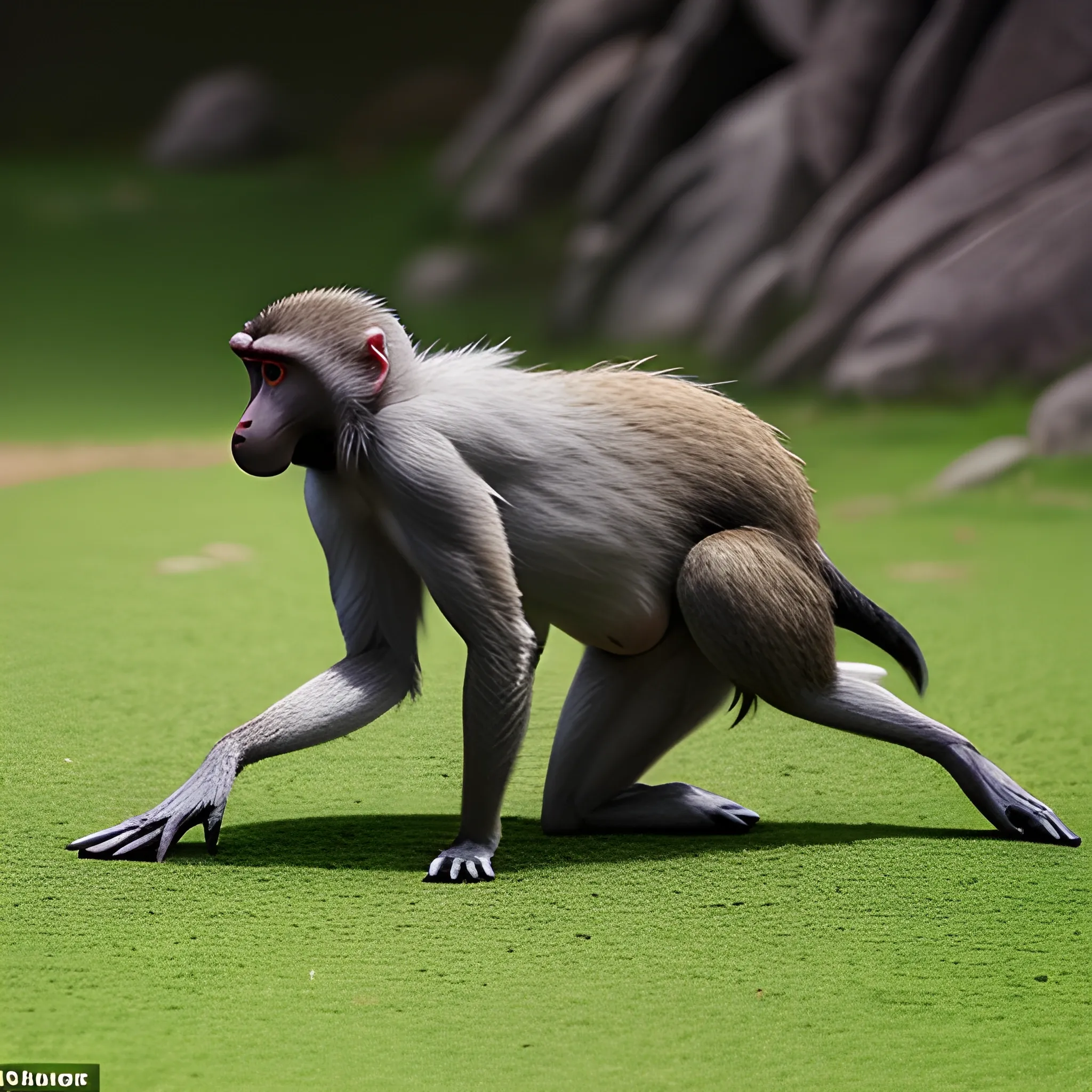
Appearance: The Baboon is a medium-sized primate with a distinctive and charismatic appearance. It has a robust and muscular body , covered in short fur that can range in color from brown to gray or even olive-green. Baboons have a dog-like snout , sharp teeth , and a hairless face with prominent cheek pouches , which they use to store food. They have long arms and powerful legs , allowing them to move quickly and with agility. Features: Baboons are highly social creatures , living in close-knit troops that can consist of a few individuals to larger groups. Their intelligence and adaptability enable them to survive in various environments , from lush jungles to arid savannahs. They are known for their strong social hierarchy and complex communication , using vocalizations , gestures , and facial expressions to convey emotions and intentions. Habitat: Baboons are versatile animals that can thrive in a range of habitats , including forests , grasslands , and mountainous regions. They are often found near water sources , as they require regular access to drinking water. In your DND world , baboons might inhabit areas with lush vegetation or live in proximity to humanoid settlements , scavenging for food scraps. Behavior: Baboons are opportunistic omnivores , with a varied diet that includes fruits , leaves , seeds , insects , and small animals. They are skilled climbers and can use their agility to escape predators or reach high-up food sources. Baboons are known for their playfulness , engaging in social interactions , grooming , and even games with each other. Role in the World: In your DND world , baboons could serve as a part of the natural ecosystem or be associated with certain deities or nature spirits. Druids and rangers might have a special connection with baboons , viewing them as symbols of adaptability and community. Encountering baboons in the wild could present various opportunities for adventurers. They might have non-combat interactions with the primates , such as observing their social behaviors or using animal handling skills to communicate with them. Baboons could also play a role in quests involving local tribes or settlements , where their presence might be considered either beneficial or problematic depending on the circumstances. While not inherently aggressive , baboons can defend themselves and their troop if they feel threatened , making it essential for adventurers to approach them with respect and caution. ,
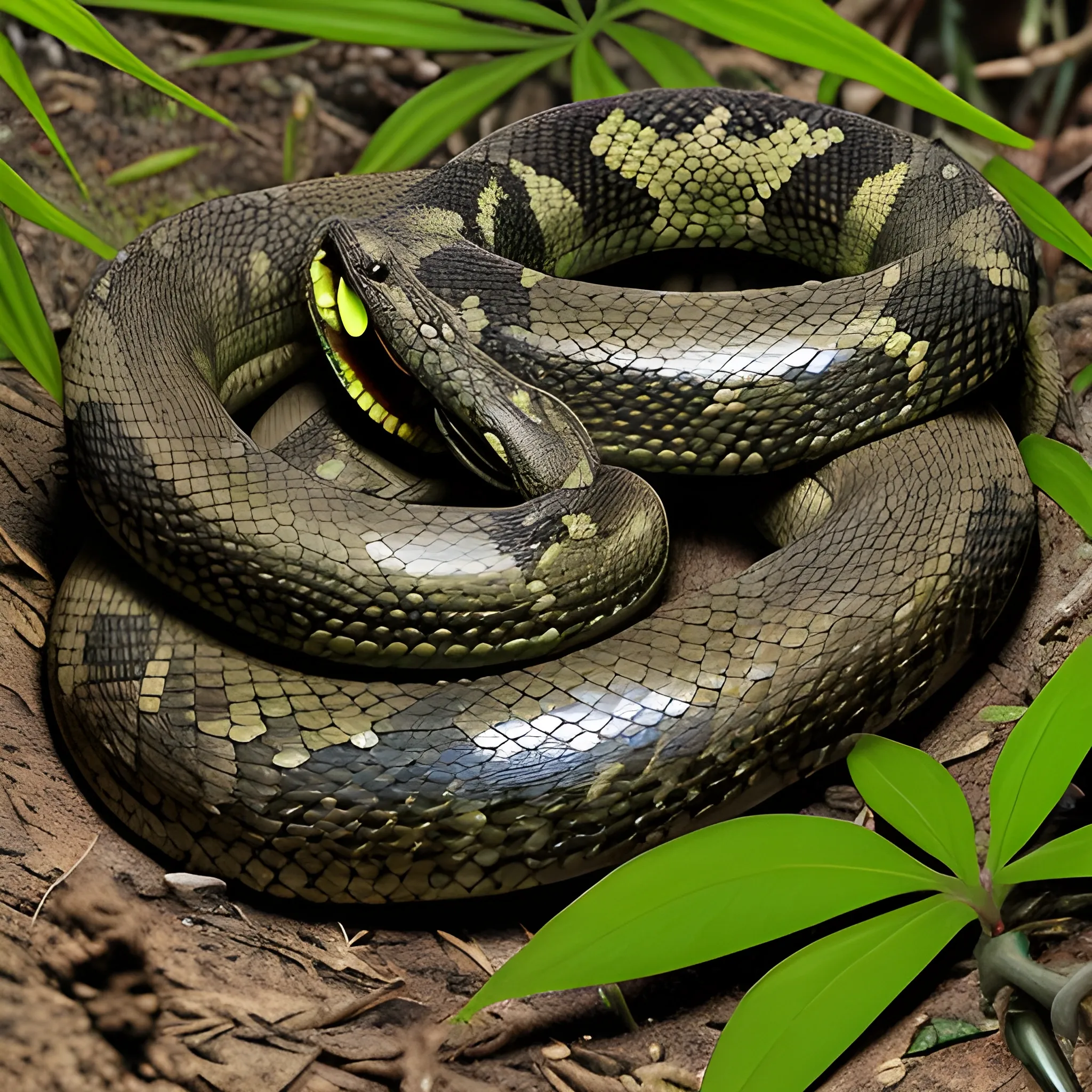
Appearance: The Poisonous Snake is a small to medium-sized reptile with a slender body and a distinctive pattern of scales. Its colors can vary widely , from vibrant and striking patterns to more muted earth tones , helping it blend into its natural surroundings. The snake's head is triangular , and it has a pair of fangs at the front of its mouth , through which it delivers its venom. Features: The Poisonous Snake is known for its venomous bite , which it uses to incapacitate its prey and defend itself from threats. Its venom can vary in potency , from causing mild discomfort to being deadly , depending on the species. While not as powerful as the venom of more dangerous creatures , the Poisonous Snake's bite can still cause considerable harm to unwary adventurers. Habitat: Poisonous Snakes can be found in a wide range of environments , from dense jungles and forests to dry deserts and grasslands. They are highly adaptable creatures and can thrive in various conditions , making them a common sight in untamed wilderness areas. Behavior: The Poisonous Snake is a stealthy predator , relying on its camouflage and patience to ambush its prey. It strikes quickly and accurately , using its venom to immobilize and begin the process of consuming its victim. Poisonous Snakes are generally non-aggressive towards larger creatures , preferring to flee rather than confront a potential threat. Role in the World: In your DND world , Poisonous Snakes could serve as common dangers in the wild , particularly in regions where adventurers explore untamed territories. Druids and rangers might have a connection with these creatures , viewing them as part of the natural balance. Encountering a Poisonous Snake in the wild can be a common and potentially hazardous event for adventurers. While they are generally not aggressive , they may strike if they feel threatened or cornered. Players might need to exercise caution and use skills such as animal handling or survival to avoid confrontations with these venomous reptiles. If adventurers do find themselves bitten , they must act quickly to counteract the effects of the venom and avoid more serious consequences. The presence of Poisonous Snakes in your campaign adds an element of realism and danger to the wilderness. Players will need to be vigilant and watchful during their travels , as the risk of encountering these venomous creatures is ever-present. Poisonous Snakes can also serve as a minor but meaningful challenge , especially for lower-level adventurers , teaching them the importance of preparation and awareness in the untamed wilderness. ,
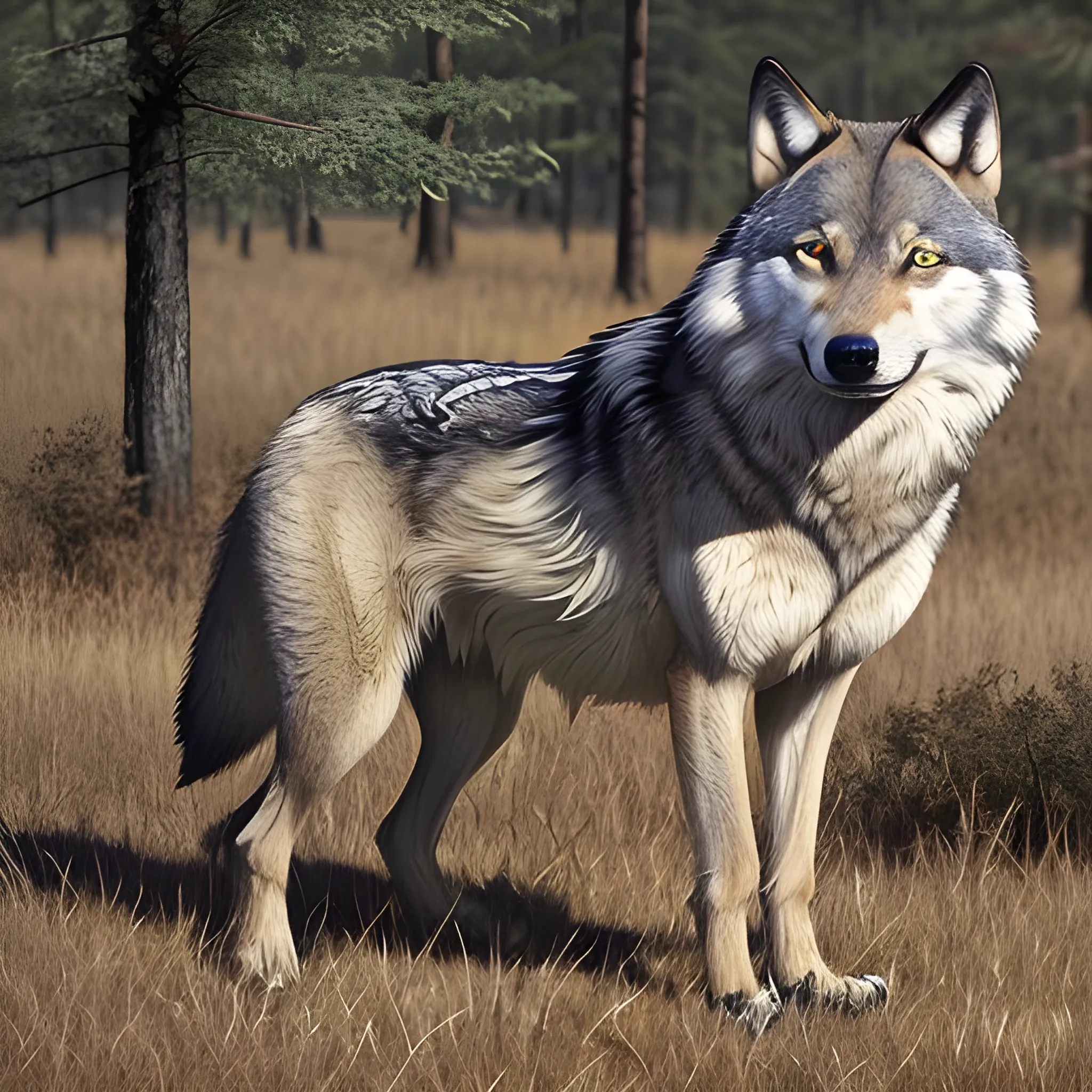
Appearance: The wolf is a majestic and intelligent creature that roams the untamed wilderness of your DND world. Wolves have a lean and muscular build , with a fur coat that can vary in color , including shades of gray , brown , black , and white. Their fur is usually thick and provides protection against harsh weather conditions. Adult wolves typically stand around 2 to 3 feet tall at the shoulder and can weigh between 60 to 150 pounds , with males being larger than females. Features: Wolves have keen senses , including exceptional hearing and a powerful sense of smell. Their sharp teeth and strong jaws are designed for hunting and consuming a wide range of prey. They have long legs , allowing them to cover great distances quickly when pursuing prey or patrolling their territory. Wolves' paws have well-developed pads , enabling them to move silently and skillfully through various terrains. Habitat: Wolves are highly adaptable creatures and can be found in a variety of habitats , including forests , grasslands , and tundra. They often inhabit remote and untouched regions , away from human settlements. In your DND world , they might roam vast stretches of wilderness or even be associated with specific forested areas. Behavior: Wolves are social animals , living in close-knit packs led by an alpha male and female. They exhibit strong family bonds , working together to hunt and protect their territory. In your DND world , packs of wolves might be seen as symbols of loyalty , teamwork , and the balance of nature. Lone wolves could also be encountered , either as solitary hunters or as outcasts from their original packs. Role in the World: In your DND world , wolves might play an essential role in the ecosystem , helping to control the populations of herbivores and maintaining a healthy balance in the natural environment. Druids and rangers might have a special connection with wolves , viewing them as guardians of the wild and emblems of freedom. Encountering wolves in the wild could present various opportunities for adventurers. They might have chances to peacefully observe wolves from a distance or use animal handling skills to communicate with them. In certain situations , adventurers could witness the social dynamics of a wolf pack or even be assisted by friendly wolves in their quests. However , engaging in combat with a pack of wolves could be a challenging encounter , as their coordinated attacks and pack mentality make them formidable predators. ,

Light of the sun , Madder sky , Forests and Grasslands , A foggy cityscape seen in the distance , one very beautiful girl , Wearing red clothes , city: 0.33 , Laurel & Hardy at Camp site , jungle road trip. parked open Steampunk Jeep with futuristic elements , (Double exposure: 1.5) , photo shoot:Brandon Wolfermist , Surreal dreams , Ethereal atmosphere , a sunny day,Contour , Global Illumination , RGB Color , Colorful paintings , High Sharpness , 8K , , Ghibli Color ,
